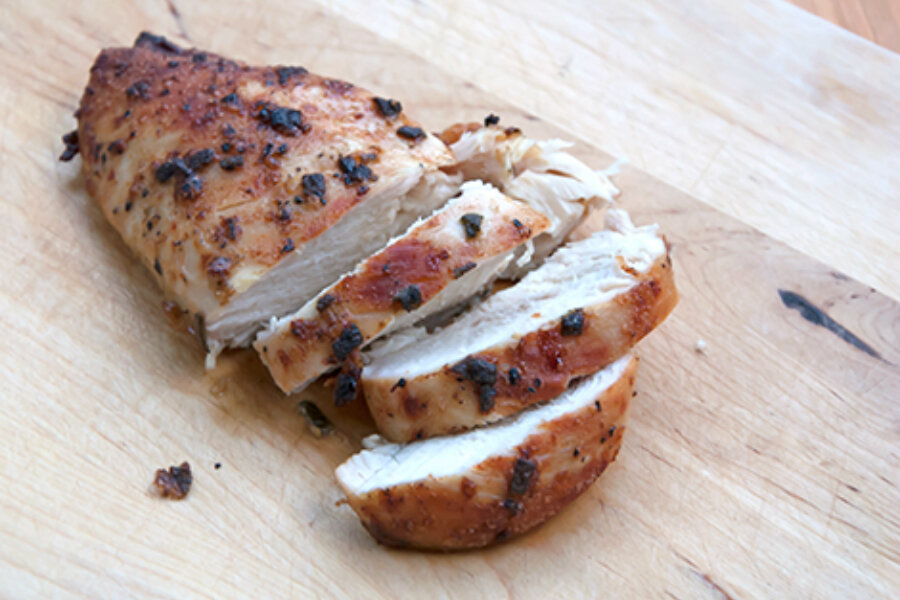Roast chicken breasts with mustard and sage
Loading...
Mustard is pretty much our favorite condiment. At any given moment, we have five or six varieties in our fridge. We give each other mustards as stocking stuffers. We love its brash, tangy brightness when slathered on things and all the ways it can be transformed by various makers – a current favorite is Edmond Fallot’s Walnut Dijon Mustard. But a curious thing happens when you cook with mustard. It disappears.
Well, maybe not disappears, but it quiets down, blends in, becomes just one subtle element in whatever it is you’re cooking. How much this happens depends on how much mustard you use in a recipes, of course, and what other ingredients are involved. But it always happens.
The French have long understood this and used it to great advantage. It also helps that France is a major producer of mustard. In fact, Dijon mustard is named for the city of Dijon, the capital of France’s Burgundy region. And, at least according to Wikipedia, mustard makers (moutardiers) first appeared on royal registers in Paris in 1292.
This simple recipe only vaguely nods toward France in that I used Dijon mustard. For a more overtly French recipe, you might consider these Pork Medallions with Tarragon Mustard Sauce we posted a while back. In addition to whole grain Dijon mustard, the recipe incorporates white wine, butter, leeks and cream.
Roast Chicken Breasts with Mustard and Sage
Serves 2 (can be doubled – don’t double marinade ingredients)
2 tablespoons Dijon mustard
1/4 cup olive oil
1/4 cup sherry vinegar (or substitute balsamic)
1-1/2 tablespoons finely chopped fresh sage (or 1-1/2 teaspoons dried)
2 boneless skinless chicken breast halves, about 1/2 pound each
salt and freshly ground black pepper
1. In a small bowl, whisk together mustard, oil, vinegar and chopped sage. Transfer half the mixture to an 8×8 glass baking dish, reserving the remaining mixture for basting. Season chicken breasts generously with salt and pepper on both sides and transfer to baking dish, turning to coat thoroughly with mustard mixture. Let rest on counter for 20 minutes to half an hour to come to room temperature.
2. Meanwhile, heat oven to 400 degrees F. and place rack in the top 1/3 of the oven. Place baking dish in oven and roast chicken breasts about 15 minutes. Baste with reserved mustard mixture and continue roasting until breasts are cooked through and nicely browned, about 10 to 20 minutes. An instant read thermometer should register at least 165 degrees F., when inserted in the thickest part of the breast. (Note: the mustard mixture in the bottom of the baking dish will blacken alarmingly – don’t be concerned.)
3. Transfer chicken breasts to a platter or individual serving plates, tent loosely with foil and let rest for about 5 minutes. Serve.








